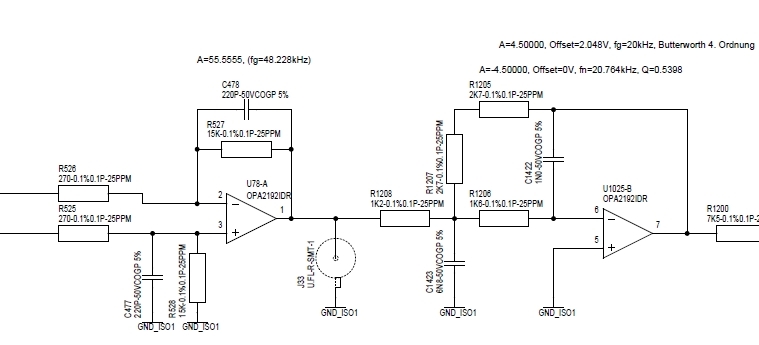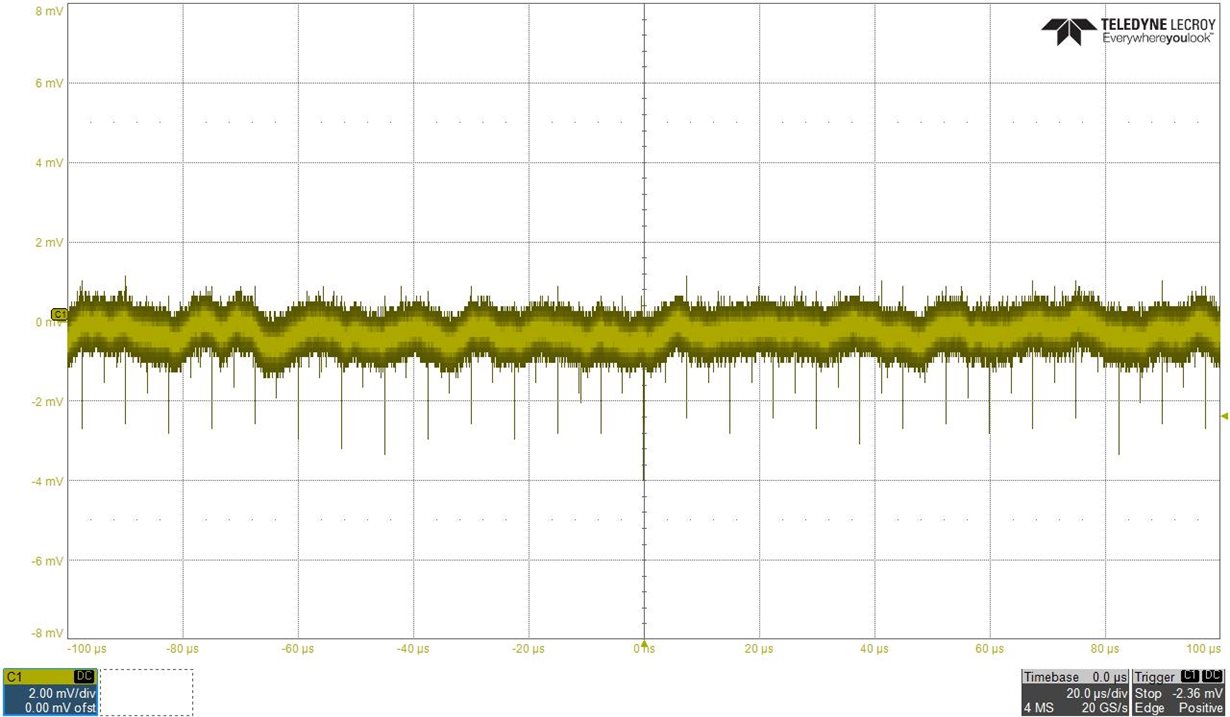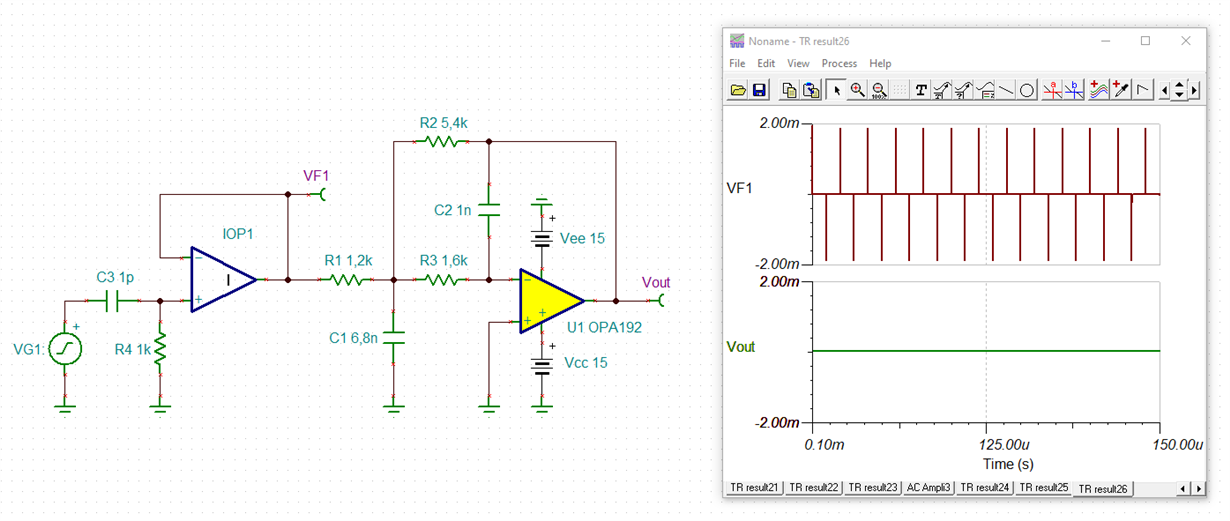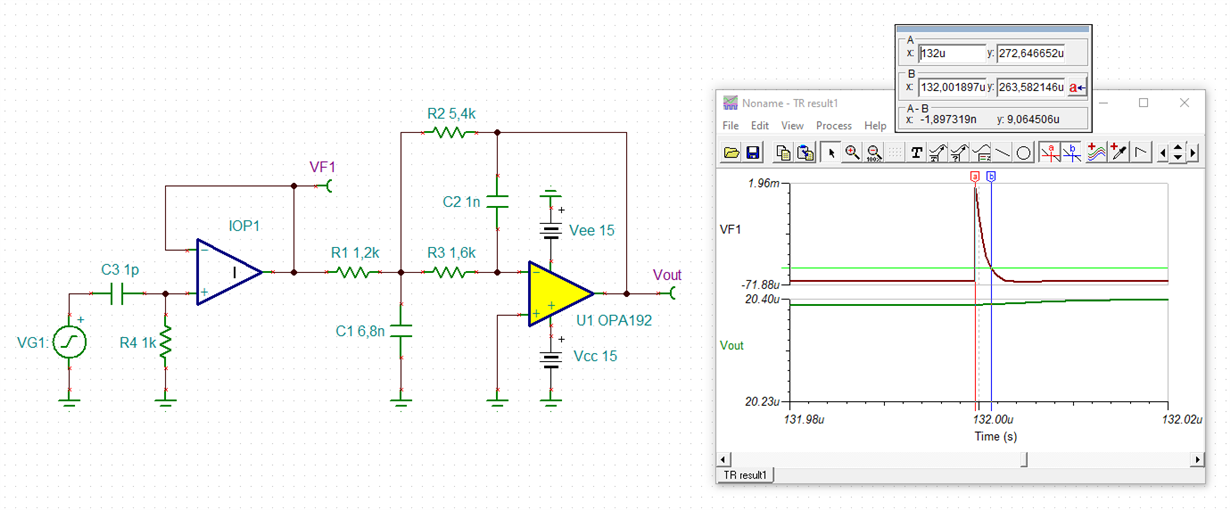Other Parts Discussed in Thread: OPA2192
Hi,
I have used OPA2192 in a difference OPAMP stage (shown in the attached picture, U78-A). Due to temperature drift concerns I have switched to the OPA2182.
Now I compared the noise flloor of those two variants as this is as well as important to us as temperature drift. Measured at J33 with an active voltage rail probe. Inputs of difference amplifier connected both to GND.
I can see two things:
1. Overall noise level of OPA2182 output is slightly higher than noise of OPA2192 output (ADC results show that OPA2182 shows a factor 1.15 higher noise floor)
2. OPA2182 output shows short spikes (please see picture)
From the datasheet of those two devices OPA2182 should perform much better in the 1/f noise (low frequency) and should be about the same at noise with higher frequency.
Current noise of OPA2182 is much higher as OPA2192.
I assume that the short spikes come from the input current spikes of the chopper amplifier. I have studied the document "Intrinsic Noise Sources in Chopper Amplifiers" from John Caldwell, TI.
My calculations show that chopper noise should not be a concern because R526 and R525 are only 270Ohm.
Any ideas what can lead to those spikes?
Thanks and best regards,
Patrick
Schematic:








